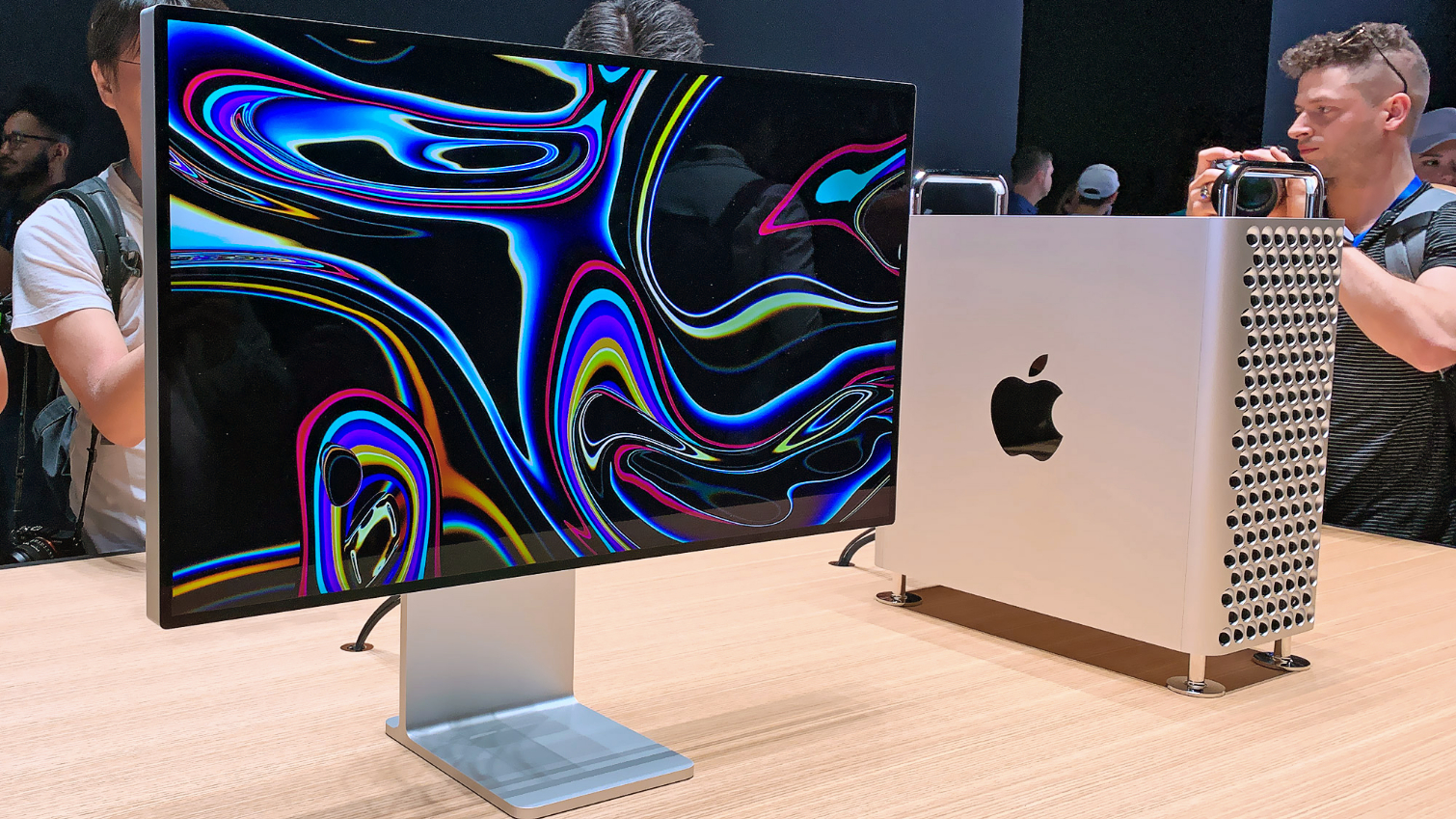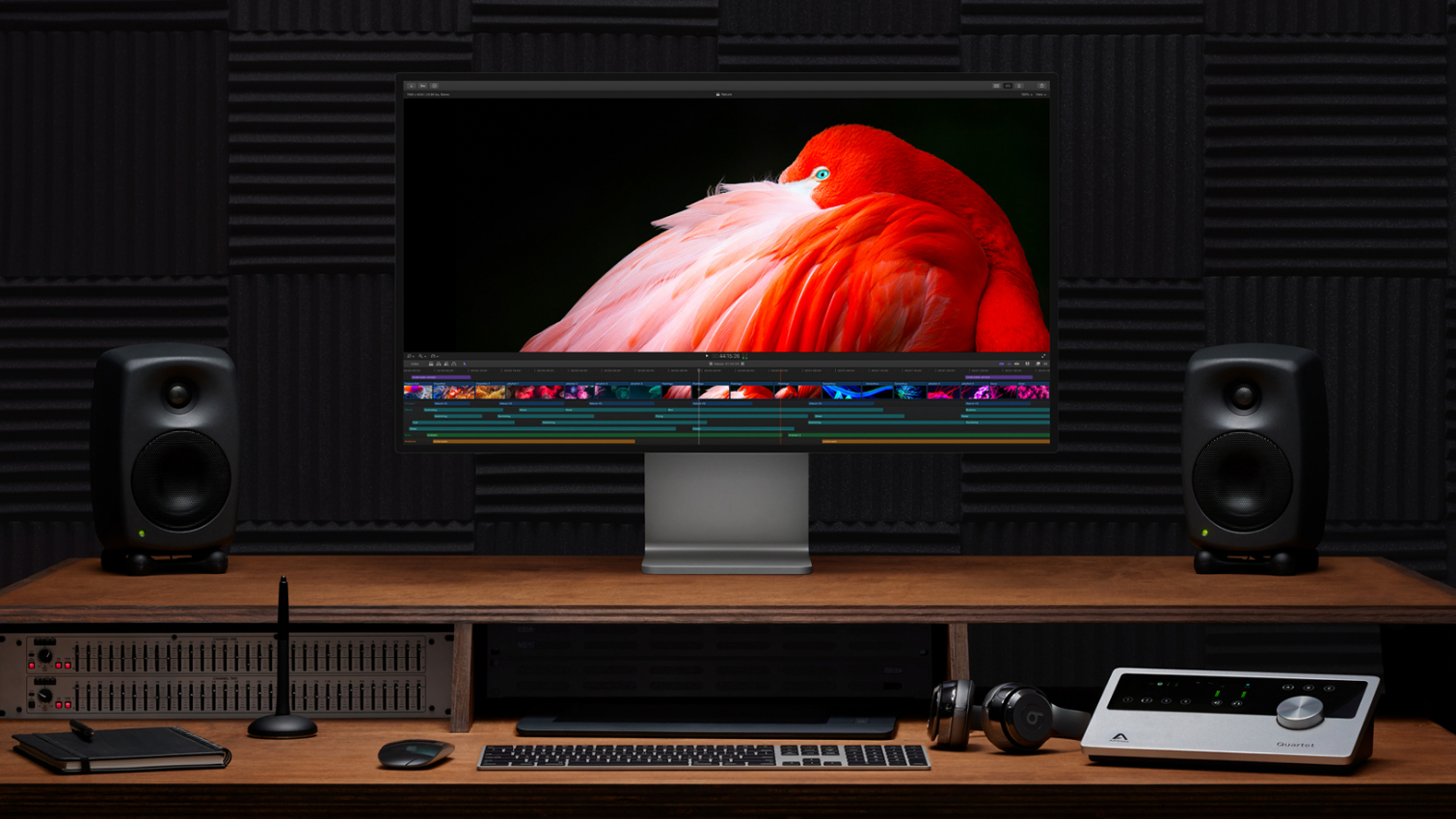Apple’s Pro Display XDR Beats OLED, So Why Not Make a Real Apple TV?
With its unique blue LED technology, high sustained brightness and accurate color, Apple's new Pro Display XDR showcases the kind of picture that could beat LG and Samsung.
I didn’t think an LCD could rival or beat an OLED screen, but now that I’ve seen Apple’s new Pro Display XDR in action, I’m a believer.

This 32-inch 6K panel (coming this fall for $4,999) is designed to be a companion to the crazy powerful Mac Pro. But the Pro Display XDR stands out plenty on its own: Apple's display delivered more accurate colors than a professional OLED monitor in a side-by-side demo while offering perfect blacks.
This is LCD redefined. In fact, Apple could leverage the tech inside this pro panel and turn it into a proper premium smart TV to fight LG and Sony. But that doesn't mean the company should go that route, according to analysts.
The power of blue LEDs
While traditional LCDs are edge-lit via a strip of white LEDs, the Pro Display XDR uses an array of blue LEDs. Apple says 12 controllers modulate each LED so you can have areas of the screen that are super bright while others are super dark. The LEDs can also modulate indecently based on the content.
A color transformation sheet converts the blue light to white light, and a series of custom lenses and geometrically optimized reflectors shapes and controls the light.

The result is a display that not only offers a 1,000,000:1 contrast ratio, but also doesn’t suffer from blooming, an unintended glow around a subject. I saw this blooming effect on Dell’s UltraSharp 27 4K HDR Monitor, which goes for $1,999 ($1,549 on sale). A picture of the moon had this odd fringing around it that looked distorted on Dell’s panel.
Sustained brightness, accurate color
Another key advantage to the Apple Pro Display XDR is its sustained brightness of 1,000 nits. Many monitors average in the 250 to 300-nit range, and even those that can hit a peak brightness of 1,000 nits are not able to sustain it.
When viewing a photo of an African woman on Apple’s monitor next to an EIZO CG319X ($5,700) professional display, the latter panel looked dim by comparison. The woman's face looked almost washed out on the EIZO, which is rated for just 350 nits.

The Apple Pro Display XDR also offers a P3 wide color gamut and 10-bit colors, which means pros get more than 1 billion colors. And the hues are very accurate.
Sony’s professional OLED monitor, a BVM-X300 V2 that costs over $25,000, delivered overly warm hues in a landscape shot. The sky and clouds looked more realistic on Apple’s display. Plus, the Apple Pro Display looked brighter than Sony’s monitor.
"Apple's video engineers are superb, as evidenced by the uniquely specified panels used in the iPad and iPhone, never mind the Pro Display XDR, which appears to be competitive with reference monitors at a fraction of the price," said Avi Greengart, lead analyst at Techsponential.
Why not make a true Apple TV?
Seeing the Pro Display XDR in person made me wonder where Apple could take this technology next. A 6K panel wouldn’t make sense for consumers, but I could see Apple making the jump to 8K for a large TV and offering a lower-cost 4K TV with some of the same innovations in this pro-level display.
Think about it. Apple wants to show its Apple TV+ content in the best possible light — literally — and there is no better way to do that than with a super premium smart TV of its own.
Just this week LG put its first 88-inch 8K OLED TV on sale, which will reportedly cost around $42,000 in South Korea. I don’t think Apple needs to go that big to make a splash, but it could certainly compete on the high end with LG with a blue LED-powered Apple TV.
But just because Apple could make a TV, that doesn't mean it will.
Apple clearly has lots of talents in the display space but building a great monitor is not the same as being in the TV business, said Stephen Baker, vice president of industry analysis at NPD. "TVs are mostly a commodity product with orders of magnitude less margin than a product like the Pro XDR and with requirements that don’t need anything like that display quality."
Baker added that the costs of making a 65-inch panel with the Apple Pro Display XDR's tech would be astronomical.
Bottom Line
Apple is investigating other screen technologies, including Micro LED, which is emissive like OLED but delivers a brighter picture without the worry of burn-in over time. Samsung should be first to market with its 75-inch The Wall Micro LED TV later this year, which will also come in a 146-inch version for commercial use.
Yes, building a display for pros is definitely not the same thing as building a TV for consumers. But if Apple can leverage some of the best features of its Pro Display XDR and trickle them down into a set for early adopters, it could give the current TV giants a run for their money.
The problem is that consumers don't upgrade their TVs often enough, and those cycles are considerably longer than that for iPhones.
"An Apple television would necessarily be a high end product, and it is not clear that Apple would be able to meaningfully change the upgrade cycle, which is very long. It's not that Apple can't do it, it's that Apple is more likely to put its resources into creating new markets, like AR glasses or watches with new health capabilities," said Greengart.
Sign up to get the BEST of Tom's Guide direct to your inbox.
Get instant access to breaking news, the hottest reviews, great deals and helpful tips.
Mark Spoonauer is the global editor in chief of Tom's Guide and has covered technology for over 20 years. In addition to overseeing the direction of Tom's Guide, Mark specializes in covering all things mobile, having reviewed dozens of smartphones and other gadgets. He has spoken at key industry events and appears regularly on TV to discuss the latest trends, including Cheddar, Fox Business and other outlets. Mark was previously editor in chief of Laptop Mag, and his work has appeared in Wired, Popular Science and Inc. Follow him on Twitter at @mspoonauer.

